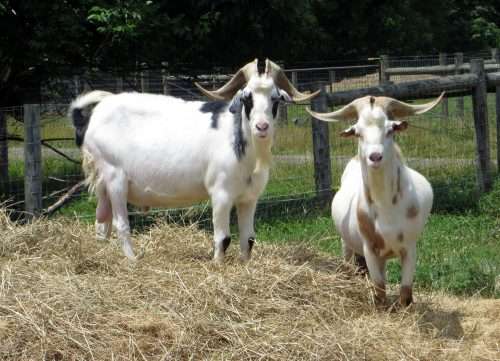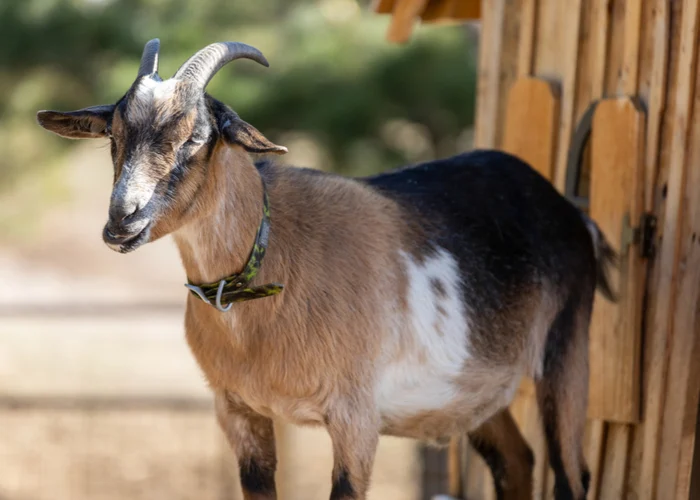
Description:
This type of goat has a comparable build to other goats and has a lengthy beard along with big, curled horns. This breed is mostly cream or white, regardless of gender, though there are some darker varieties that appear black. This species is equipped for any type of weather because of its thick coat. In actuality, their coat self-regulates to accommodate the climate. Also, their long ears regulate their body temperature and keep them warm. They often have thick, powerful muscles that act as an additional layer of protection from the weather.
Behavior:
One of the things that makes the Kiko goat so desirable to breeders is its mild and amiable nature. You might anticipate them to be meek given their gentle demeanor, yet they will defend themselves if attacked or threatened. Breeders and farmers must establish a habitat that keeps predators out of their homes because these animals have little fear of almost anything.
Because of their generally autonomous nature, they don’t flee when danger approaches. Instead, they typically take a wait-and-see approach to situations. Whether provoked or not, they won’t attack other animals, and they usually keep to themselves.
Benefits/Uses:
Kiko is the Maori word for meat. Although many of these lines still exhibit strong dairy characteristics, these goats are primarily developed for meat production, making them an outstanding dual purpose goat.
Origin/History:
A meat goat breed from New Zealand is known as the Kiko. Kiko is a translation of the Mori term for flesh. Garrick and Anne Batten created the Kiko breed in the 1980s by mating imported dairy goat bucks of the Anglo-Nubian, Saanen, and Toggenburg breeds with local feral goats. The breeding program’s sole goals were quick growth and the capacity to endure in the pastoral surroundings of the New Zealand hill region.
In 1992, Goatex Group LLC brought the Kiko breed to the country. The AKGA, IKGA, and NKR—the latter being the largest of the three—are the current US registers for kikos. Kikos could be recognised as 100% New Zealand through these organizations, proving that their ancestry can be traced all the way back to the original New Zealand stock. Goats that are “purebreds” are at least 15/16ths New Zealand stock, while those that are “percentages” are at least 50% New Zealand stock.
Keeping as Pet:

Habitat Conditions & Setup
- Enclosure
Given their intense foraging behavior, these goats require a lot of area. But, as long as there is plenty of ground cover for them to eat, they can adapt to almost any habitat.
You will need to use caution when guarding against predators because kikos aren’t known for showing respect for large creatures with sharp fangs and claws. They’ll probably maintain their ground if threatened, which frequently doesn’t work out well for them. It is therefore your responsibility to protect them.
To prevent them from wandering, you’ll also need sturdy fencing. They like a diversified diet and are open to traveling to different places to eat. As a result, you should make an effort to give them as many appropriate foods as you can to lessen their innate restlessness. But, a reliable fence is considerably more dependable than a nutrient-dense, diversified meal.
That fence must also be very high. These goats can easily jump over a low fence because they can stand up to 6 feet tall on their hind legs. They will also do it if they believe there is anything valuable on the other side.
These goats are frequently employed for land management because of their versatility and desire to consume nearly everything. They are experts in removing brush in places that are prone to wildfires, and they can quickly get rid of troublesome weeds in your fields or lawn.
- Temperature
Kikos can survive in all but the harshest temperatures, and they will naturally control the growth of their coats to suit the environment. For their home and bedding, you shouldn’t have to do anything to keep them warm and secure. You don’t need to be concerned about letting them loose in moist soil because they are not susceptible to foot rot. In fact, they enjoy moist conditions and are common in humid areas like Florida.
Table





